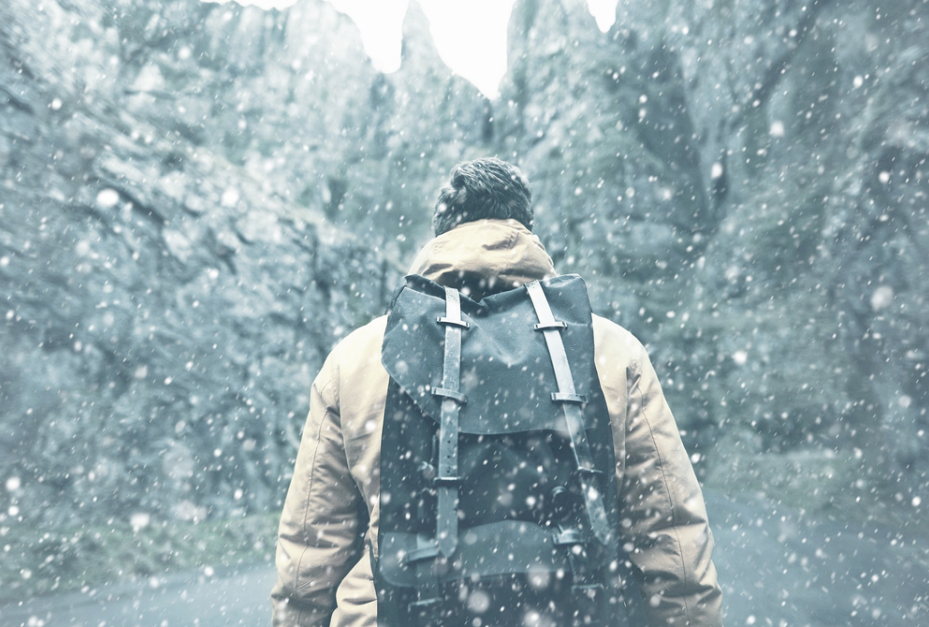Getting the right jacket is something you can’t skip when winter comes howling in. But as outerwear collections are so extensive – with soft/hardshell jackets, puffer jackets, parkas, and a lot more in the mix – finding the right outerwear can be confusing. This winter jacket guide shows you the various factors you should keep in mind for your next jacket purchase!
1) Jacket type
Jacket types are plentiful – puffer jackets, 3-in-1 Jackets, parkas, softshell jackets, and a lot more. And the differences are not limited to looks. Knowing the differences, of at least the popular ones, will help you find the best outerwear for your requirements. Here are the most common ones.
Puffer jackets featuring a quilted structure with puffy-looking sections are a great option for staying warm without the bulk. This outerwear is easy to compress and lightweight making it ideal for people with a high activity level.
Parkas are long winter jackets that reach up to your mid-thigh or even knee. Its durable shell material makes them reliable protection for people living in cold and windy places. wind and precipitation making parkas one of the warmest winter jackets for extremely cold climates.
If the weather is somewhat unpredictable, a 3-in-1 jacket is probably what you want. This one allows you to wear just the mid-layer or the outer shell, or both pieces together making it easy to adapt to the changes in weather. The mid-layer is usually fleece or wool and the outer one is water-resistant & breathable material.
2) Insulation
Insulation of the jackets determines the amount of heat your body retains. The two popular insulation options are down and synthetic insulation.
Down is a natural insulator made from feathers of ducks or geese. It provides great warmth while being weightless, compressible, and easy to pack. They, however, fall on the expensive end of the spectrum. Also, down jackets are slow to dry and might not be the best option for damp weather.
Synthetic insulation is fast drying, is cheap, and can keep you cozy in humid climates or rain. However, this outerwear made of polyester fibers is a little heavier and difficult to pack for people who travel a lot.
3) Shell
The outer shell of jackets is your first layer of weather protection. Although it can be made from a variety of materials you should focus on how it stands up to the weather you’ll face.
For instance, If you live in a wet area with occasional precipitation, it’s judicious to choose a down jacket that has a DWR treatment. This outerwear with a long-lasting water repellent finish lets the rain bead up and roll off the surface without soaking it up. On the other hand, if you are an adventurous soul who longs to explore the outdoors during winter, choosing a breathable jacket will save you from getting drenched in perspiration.
4) Special features
Jackets are versatile outfits that can give you more than cold protection or style. Here are some of the best jacket features to pick from, based on what you’re looking for.
Hood: Hooded jackets are popular for the comfort and style they provide. Some jacket styles come with extra insulation on the hood to keep you more comfortable.
Drawcord: Drawcords at the hem and hood of a jacket make it easier to seal draughty openings for better protection from wind and cold air. Generally, drawcords are attached at the rear and dual drawcords at the side of the face. You can also find jackets styles with the drawcord at the waist instead.
Vents/ Pit-zips: These are openings at the armpits and core that facilitate venting the built-up body temperature as your exertion level rises. Vents are especially common with waterproof jackets, however, you can still find them in a few insulated jackets.
5) Jacket Color
If you choose a shade that is too strong or bright the coat will end up wearing you. Which is to say, the coat grabs the first attention, and then you. On the other hand, colors from the fairer end of the spectrum like lighter shades of blue, and will make your face appear pale.
Use a color chart to figure out the perfect color that complements your complexion and the season. You can finish off with accessories like gloves and custom beanies to create a strikingly impressive outfit.
Wrapping it up
Now that you know what to look for in a winter jacket, you’ll be able to choose the perfect outerwear to keep yourself warm, dry, comfortable, and stylish all season long.
About Author
Melody D is a promotional marketing strategist, product expert, and blog writer at CapBargain. Having 8+ years of experience in the apparel industry, she follows the trends in the fashion world with a strong sense of passion and finds joy in sharing her fascination with the rest of the world.





